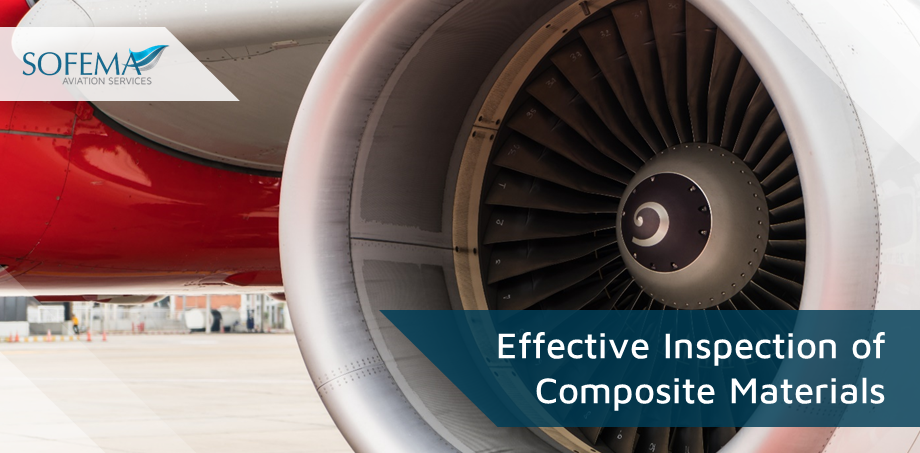Sofema Aviation Services (SAS) www.sassofia.com considers key elements related to the effective Inspection of Aviation Composite Materials.
Introduction
The goal of damage tolerance evaluation is to predict how an aircraft structure will behave if it sustains damage – whether from fatigue, inherent flaws, large-scale manufacturing defects, or accidental damage during its operational lifetime.
- To ensure that this damage will not lead to catastrophic failure or significant deformation under expected load conditions before the damage is detected and fixed.
In the context of aviation composite material inspection, the concept of damage tolerance evaluation is crucial for ensuring the structural integrity of aircraft. Damage tolerance evaluation is a systematic process that aims to assess the ability of a structure to withstand and safely carry loads even when subjected to various forms of damage throughout its operational life.
Advanced Non-destructive Inspection (NDI)
Advanced NDI techniques, such as ultrasonic testing, eddy current inspection, and thermographic inspection, are widely used to identify, quantify, and monitor any damage or defects in composite structures that might impact their damage tolerance.
- NDI allows for the detection of both surface and subsurface defects, which is critical in assessing damage tolerance.
Fatigue Analysis:
Repetitive stress and strain can cause micro-cracks and other forms of damage, known as fatigue, in the aircraft structure.
- In composites, this could be delamination or fibre breakage.
- Regular inspections are conducted to assess and manage fatigue damage and ensure the structure’s damage tolerance isn’t compromised.
Finite Element Analysis (FEA):
This is a computational tool that helps engineers model how a composite structure might behave under various load conditions, including how the structure may react if it has sustained damage.
- By predicting potential stress points or weak spots in the structure, FEA contributes to damage tolerance evaluation.
Material Testing:
- Damage tolerance can be significantly influenced by the properties of the material itself.
- Therefore, rigorous testing of composite materials is performed to understand their behaviour under different conditions and loads.
o This can involve subjecting materials to impacts, extreme temperatures, and corrosive environments.
Maintenance, Repair, and Overhaul (MRO):
A critical aspect of ensuring damage tolerance is regular MRO. Maintenance protocols are established based on damage tolerance assessments to ensure that any damage detected during inspections is repaired to maintain the structural integrity of the aircraft.
- Inspection techniques play a vital role in damage detection and monitoring.
- Non-destructive inspection methods, such as ultrasonic testing, thermography, X-ray imaging, and visual inspections, are employed to identify and assess damage in composite materials.
- These inspections may be carried out periodically during maintenance checks or in response to specific incidents.
- By detecting and evaluating the extent of damage, engineers can make informed decisions regarding repairs, replacements, or continued operation of the affected structure.
Redundancy and Load Path Diversity:
These are design philosophies which aim to ensure that if one part of a structure fails, the load can be transferred to other parts without catastrophic results.
- By designing aircraft with multiple load paths, engineers can significantly improve the damage tolerance of the structure.
Damage Tolerance Analysis (DTA):
- A DTA is usually performed during the design phase of an aircraft.
o This involves mathematical modelling and simulation to understand the impact of potential damage on the structure of the aircraft and its performance.
o This can guide design decisions to ensure the final product has adequate damage tolerance.
Next Steps
Follow this link to our Library to find & download related documents for Free.
Sofema Aviation Services (www.sassofia.com) offers the following 2-day course – Composite Material TAP Testing for Aviation Inspectors. Please email team@sassofia.com for further information.
Tags:
Aircraft Inspections, aviation, Aviation Composite Materials, Composite Materials, Damage Tolerance Analysis (DTA), Fatigue, Finite Element Analysis (FEA), Inspection of Aviation Composite Materials, Maintenance, Material Testing, MRO, Non-destructive Inspection (NDI), Overhaul, Repair, SAS blogs




